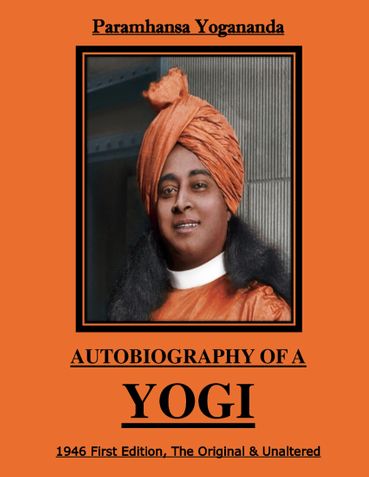You can access the distribution details by navigating to My pre-printed books > Distribution
Paramhansa Yogananda's Autobiography of a Yogi (1946 First Edition, The Original & Unaltered) (eBook)
Description
This Scripture is identical to the text of the first edition, published in 1946, by Paramhansa Yogananda Himself. All the photographs that Master had inserted in His first edition, are also included herewith.
Paramhansa Yogananda was born as Mukund Lal Ghosh (also known as Swami Yogananda) in a Bengali Hindu family on January 5, 1893 in Gorakhpur, India. He showed signs of spiritual awareness even as a young child. His quest to find a great Guru to guide him in his spiritual path led him to Swami Sri Yukteswar Giri, who molded the young man who was to become a great spiritual force. After his college graduation in 1915, he took formal vows and was from that time on called Swami Yogananda Giri. Then in 1935, when he returned to India to visit his Guru, Swami Sri Yukteswar Giri bestowed upon him the title of "Paramhansa." The "supreme swan," of which this title is named after, is a mythological bird that can separate water from milk and drink the milk.
The book begins with his childhood and family life, then finding his Guru, becoming a monk and establishing his teachings of Kriya Yoga meditation. Yogananda's initial impact was truly impressive. But his lasting impact has been even greater. Yogananda's Autobiography of a Yogi, first published in 1946, helped launch a spiritual revolution throughout the world. His message was non-sectarian and universal. Yogananda's Guru, Swami Sri Yukteswar, sent him to the West with the admonition, "The West is high in material attainments, but lacking in spiritual understanding. It is God's will that you play a role in teaching mankind the value of balancing the material with an inner, spiritual life."
Yogananda brought clarity to hundreds of thousands of people regarding the ancient teachings of India - previously shrouded in the cultural assumptions and terminology of an era long past. He was the first yoga master of India to permanently live and teach in the West. Yogananda arrived in America in 1920, and travelled throughout the United States on what he called his 'spiritual campaigns' to teach the Science of Kriya Yoga.
His association with nineteenth-century's Great Masters Lahiri Mahasaya and Mahavatar Babaji, who had prophesized the writing of this book and as well as how he travels across America lecturing and establishing his teachings in Los Angeles, California. Autobiography of a Yogi is an introduction to the methods of attaining God-realization and emphasizes the value of Kriya Yoga and a life of self-respect, calmness, determination, simple diet and regular exercise. It has been in print for the last seventy years and has been translated into over forty languages. It has been highly acclaimed as a spiritual classic and is designated as one of the 100 Most Important Spiritual Books of the 20th Century.
With soul-satisfying consciousness and endearing wit, he lightens the hidden secrets of life and the world opening our hearts and minds to the happiness, splendour and limitless spiritual capacities that last in the lives of every human being.
About the Author
Book Details
Ratings & Reviews

Currently there are no reviews available for this book.
Be the first one to write a review for the book Paramhansa Yogananda's Autobiography of a Yogi (1946 First Edition, The Original & Unaltered).
Other Books in Self-Improvement, Religion & Spirituality
Amol Mahajan
பிரான்ஸிஸ் கிங்ஸ்பரி
DR.H.N.NAGARAJA
Bharti Kapoor




